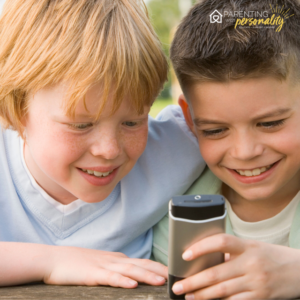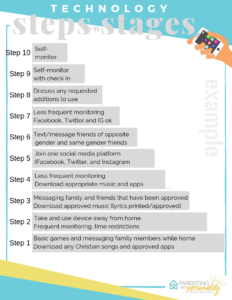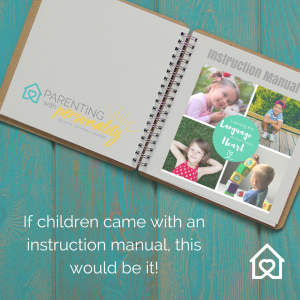
Gone are the days of simplistic or limited technology and communication. Now, you can text, email, message, snap chat, DM (direct message), like, love, or drop emojis, unless of course, you decide to ahem, call?! Our kids are growing up in this culture quite different than what we as parents experienced. It can feel difficult to navigate this journey or feel equipped to do it well. You may find yourself longing for those simpler and easier days, but in reality, there’s no going back. So, I’d like to offer some encouragement on how you and your family might tackle these technology issues to reduce the stress and tension, and instead use technology and communication to enhance your family togetherness.
Even from the time we raised our oldest, now 23, to our youngest, who is 4, technology and communication has changed drastically. What started as simple flip phones has radically morphed into a computer that is palm-sized and has phone capacity (but will rarely be used as a phone! J ). And the age at which our kids are using these devices continues to get younger and younger all the time.

Perhaps you have already been faced with a child requesting their own iPhone, iPod, phone, etc. Or you might just be anticipating the day that awaits you. Take heart! Instead of dread, let’s talk through some ways that you and your family can help put technology to constructive and beneficial use in your family and home. And don’t worry, it is never too late to establish some clearer boundaries or uses for this technology. In fact, I encourage you to do a periodic assessment of how technology might be helping or hurting and what might need to change to keep things healthy and wholesome!
I remember how it started in our home several years ago…
“But why do you think you need a cell phone?” I asked. It seemed we had this discussion frequently, and my position wasn’t changing.
“So, you know where I am!” His desperation was a good match for my frustration.
“You’re going into junior high, Son.” I continued with our conversation, trying to impart patience that was only skin deep at this point. “I know where you are. I drop you off where you are. And I pick you up where you are. You have no way of getting anywhere else!”
“Mom,” The tilt of his head indicated his patience was starting to wear thin too. I knew he desperately wanted a phone. But I felt strongly about this. I could hardly imagine the day we’d send our kids off to school with personal phone access. When I was growing up we thought it was great to get a phone that you could carry around your house with no cord attached.
Technology. Who would ever imagine that one little word could grow to include so many things? The word itself sounds rather impressive, yet for many of us, there is a tiny flinch inside when we say it. If shorter, we might accuse it of being a four-letter word! How is it that embracing technology can be so difficult? Maybe it would help to simplify the effects of technology in our life.

Technology can positively affect communication.
All feelings aside, it’s hard to deny that technology has allowed us a whole new level of communication. I remember attending a writer’s conference in New Mexico several years ago. As I sat eating my lunch, I received a text message from my techno-talented five-year-old son. With dad’s help, they’d taken a picture of him drinking chocolate milk (our favorite drink) while eating at our favorite pancake place! He typed the text…chocolate milk. I knew from the setting of the picture exactly where he was. And I typed a message back: “What? IHOP without me?” Then I took a picture of me drinking my chocolate milk at the writer’s conference and sent it to him. That of course, encouraged a phone call. So, he dialed the numbers and visited with mom, ten hours away while we enjoyed our favorite things together. That is the upside of technology. We are able to create memories and have discussions in ways that were never possible before.
Technology can negatively affect communication.
Unfortunately, with the advancement of technology, people often resort to emails instead of hand-written letters and to texts or IM messages instead of phone calls. A simple push of the like or love icon is meant to convey care, prayers, or concern. Social networking has opened doors to keep up with a friend’s life or activities without ever picking up the phone and talking. Sadly enough, people can sit in the same house or vehicle and instead of talking they text short messages as a replacement for communicating.
Technology has also made an appearance in the doors of counselors’ offices. We hear about people and relationships being affected by unhealthy online materials, addictions forming from accessibility to things that were once not so readily available, and communications gone awry as people attempt to communicate in abbreviated fashion about significant matters via technology.
Often times, the filter people use in face-to-face discussions is absent in these emails, texts, or social media posts. Emails are sent in anger and copied to uninvolved parties, dividing family relationships. Teens texting inappropriate or harassing messages since they are thought to be less obvious to others. And the ease of snap chatting, allowing the post to quickly disappear tend to make people feel bolder in doing or posting things they may otherwise have more accountability for. These are some negative aspects of technological advancements.

I recently picked up the book The Tech-Wise Family by Andy Crouch and found some interesting statistics on technology:
- Nearly 8 in 10 parents say raising kids is more complicated today, with technology topping the list by being the number one reason why (65%).
- Children are reportedly using their electronic devices 5+ hours a day.
- 60% of families never take regular breaks from social media.
- 82 % of parents say their child sleeps with their phone next to them.
What do these statistics convey? It shows us how important it is that we put technology in its proper place and perspective in our homes and lives. As Andy Crouch so nicely lays out in his book, we need to “create a home where kids, parents, and technology can live together in harmony.”
Here are five keys we use to keep technology in its place in our home:
- We make relationship priority over technology and commit to being present with no devices at specific family times.
- No phones at mealtime or restaurants.
- No devices at family-time or devotion time.
- Put devices away when company is visiting.
- Balance visiting and tech time on family drives (50/50).
Some families choose to say no devices in the car, but our family travels a lot and longer distances, so we try to split the time or do 20 minutes on, 20 minutes off)

- We utilize an open-device policy with spouses having each other’s passwords and parents having children’s passwords and having access at any time.
- We write down passwords and report if changed.
- We respectfully share device when asked for it.
- We can check messages or activity at any time.
- We choose to use technology together and not alone.
- We can talk freely about what we are doing online.
- We don’t use devices behind closed doors.
- We use devices in open family areas where we can feel accountable and involved.
- We make good choices to control our technology use instead of letting it control us.
- We have designated wake and sleep times for our devices (time to be allowed or stop using each day).
- We charge in a designated central location each night (avoid the temptation to use past hours or in bedrooms and not healthy to charge electronics in your sleeping area).
- We store devices in a central location as well, (for us, a corner of the kitchen counter) instead of bedrooms.
- We use the helpful programs to monitor and mentor developing healthy use of devices.

- We purpose to be intentional and wise in how we use technology.
- We serve as technology mentors to our children and become informed.
- We help hold each other accountable and allow our kids to respectfully do the same for us.
- We respectfully discuss how trust is increased and new privileges or stages of technology use earned.
- We talk openly about the dangers associated with online use and help our children understand that it is not a matter of not trusting them, but taking our job seriously to help protect and defend them should the need ever arise.
Technology can easily drive a wedge between us and our children if we are not wise to think, plan, and discuss how we are going to handle things proactively. It can be easily overwhelming to figure out what boundaries or safeguards need to be put into place. It can also become an area that can easily exasperate our children if we are not communicating with love and respect. While many topics of parenting allow us to ask our parents or others in past generations for their input or advice, technology is an ever-evolving-issue. This is one issue past generations never had to deal with.
I have found this journey a challenging one with tweens and teens. While we want to foster some independence, we also want to instill a feeling of accountability and responsibility so that our children can be protected from some of the associated dangers and temptations. And that is something many parents may not realize. These boundaries set in place can protect our children from things far beyond what children used to be exposed to and what many parents may not even realize is possible, right in the hands of their child.

Maybe you already have some boundaries in place for your children and family. That’s great! This might be a good week to just look them over and make any adjustments that might be useful. But if you don’t have those boundaries in place, you might want to check out these free resources to help you do that! You might like the cell phone contract. Feel free to use as is or use this as an idea to design your own. You might also like to use the resource that can help you plan the stages and privileges that can be earned with building trust and respect with technology. You will find both an example and one that can be easily filled in by you and your family.
I urge you to spend some time evaluating how technology is being used in your home. Is it helping your child grow into a healthy and responsible individual? Is it furthering your child in his or her purpose? Do you really know and understand social media platforms, apps, and games your child is using? You may feel like the unpopular parent for not allowing your child to use an app others are allowed to, but it is more important to make those decisions that protect and guards your child from potential harm when you are able. Do you have a keen sense of the amount of time your child is investing in different apps and games? How is it affecting them?
There are fun ways to use technology in your family! If you haven’t engaged with your child electronically, it might be an avenue you can pursue! These are some fun ways we have been able to enrich our family “togetherness” with technology. You might like giving them a try or share in the comments some other fun things you have tried to enhance relationships with your children via technology!
- Interactive two-person games (such as Words with Friends, Draw Something, Cup Pong, etc.) where you each take a turn and the game can go for several days.
- Family group messages (like when mom and dad were on vacation J or when mom injured her foot and needed sympathy)
- Making videos or short talk shows for some laughs
- Designing Canva graphics together
- Random texts of encouragement, jokes, or checking in on things that matter during the day.

Let’s do this!!!





